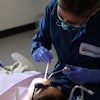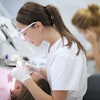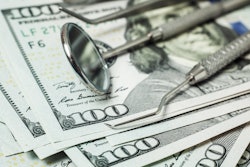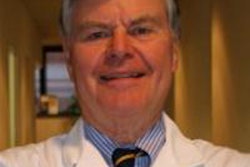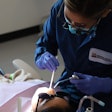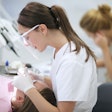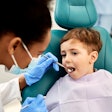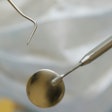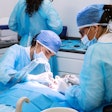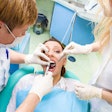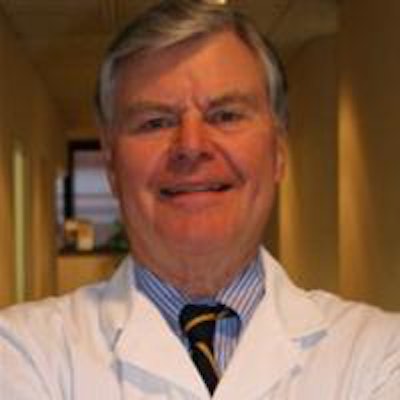
"Efficiency is doing the thing right. Effectiveness is doing the right thing."
— Peter Drucker
The transformation of American dentistry from private practitioners to salaried employees is advanced by some as inevitable, but is it a certainty? The use of midlevel providers and dentists wearing union buttons on their lab coats and other changes in the delivery of oral healthcare present a complicated and complex array of problems waiting to be solved.
How has this problem evolved? What is the solution to this complex issue? Will the dental profession, as we have known it, survive? There are some who say that the current dental model is a dinosaur. They say we need a new standard for the 21st century.
The big issues confronting dentistry have changed very little from years past, but times have changed and the U.S. has become much more diverse. There is an increase in population, more people on public aid, and a greater concentration of people in urban and exurban settings.
Dentist as diagnostician
However, certain truths remain unaffected: We know what causes dental disease, how to control dental disease, and that oral health and systemic health are linked. In addition, the most significant contribution a dentist can make is diagnosis, and the ability to diagnose is the reason for a dental education. The cognitive component of patient treatment is at least as important as the surgical intervention.
 William T. Brown, DDS.
William T. Brown, DDS.
Diagnosis involves looking at the patient as a whole, taking the time and trouble to review the medication and dental history, and finding out whether there is pathology. If pathology exists, then determine what it is and what the implications are for the patient's general health, not just dental health.
At this point, the dentist is operating at his or her highest level of skill, especially if the dentist is able to refer the diagnosis to the cause. Diagnosing utilizes the skill, background, and clinical experience from dealing with hundreds of people and making this experience available in terms of thinking, perceiving, diagnosing, and programming. This is the dentist's greatest contribution to the patient: proper diagnosis and formulating the proper program that can give the best oral hygiene and also the best general health.
The critical question is: Who is responsible for the diagnostic algorithms?
The primary contribution the dentist makes is the ability to diagnose, integrate, and synthesize his or her understanding in terms of total health. If diagnosis really is the keystone activity of dental practice for the benefit of patients, who should perform the service: a dentist with eight years of college or a midlevel therapist with two years of training after high school? It is impossible to train someone in a few months to develop the care, skill, and judgment necessary to treat an organ system that is as much a medical specialty as ophthalmology or otolaryngology.
Some hygienists tell me they are already doing the examinations and diagnosis of patients. The dentist comes in after the fact for a drive-by exam and looks for holes and spaces to fill. The hygienists argue, "Why shouldn't we practice independently? We are already doing exams, diagnosis, and treatment."
Fighting for more autonomy by auxiliaries is nothing new, but it has relevance to the issue of midlevel dental therapists. Hygienists see an opportunity to treat patients first and stop dentists from being the sole gatekeepers of dental patients.
But some questions need to be answered first:
- Should midlevel providers be under the direct supervision of a dentist, or should they have independent practices?
- Will there be a new era of teledentistry?
- Will a technician be able to discern the subtle changes in periodontal tissues that indicate impending long-term problems?
- Will a technician be able to establish baseline metrics to determine if a patient is improving, staying the same, or getting worse? Can that be learned in a few months coupled with a few years of dental hygiene practice?
- Would you want a member of your family treated by that level of care?
Access to care
The reason given in most arguments favoring the creation of dental therapists in the U.S. is lack of access to care in underserved areas. There is a misdistribution of dentists; they don't practice where patients need them. Many small towns don't have a dentist, and rural residents are often forced to drive long distances for care. I live in an underserved area where one full-time dentist works in a federally qualified community health center and a part-time dentist practices in a neighboring town. They are the only dental care providers for 8,242 souls.
Some argue that the answer to these problems is the dental therapist. Healthcare economists say that talk of improving access to care, bending the cost curve, and creating team-based care isn't advanced by requiring students to spend more time and money getting trained for advanced degrees. They say this extra training will invariably result in longer waits and increased costs, because those who meet increased requirements will eventually demand higher compensation.
Proponents of dental therapists note that the model has been used for more than a half-century to great benefit and acceptance in many places around the world. Because of their abridged training, they perform basic dental services for reduced costs. Because they have less expensive training, more could be prepared to meet the needs of the underserved population at a reasonable cost.
But others argue that the development of an entirely new player to provide primary dental care is a waste of time, money, and resources. The complex issue of caring for the underserved population is being pushed from outside the dental profession by state legislatures and nonprofit charitable foundations to solve the problem. Anyone who practices dentistry knows that funding of an independent midlevel therapist will require a combination of increased Medicaid rates, tax incentives, and taxes. Does anyone think that an independent dental therapist can have a lower overhead and all the inherent complexities of a private dental practice?
A recurrent statistic touted by supporters of dental therapists is 830,000 visits to hospital emergency rooms annually due to preventable dental problems. This number doesn't reveal that it's not an access problem -- it's a patient problem. If the study researchers asked the correct questions, they would show that a significant number of these ER dental patients have dental insurance but choose not to go to the dentist. Why? A variety of reasons: afraid of the dentist, would rather spend time and money on other things (iPhones, haircuts, clothes, home entertainment centers, etc.), and the list goes on. Dentistry has not been able to establish its inherent value in the public's hierarchy of needs.
Another potential problem may be the limiting the scope of dental therapists to "routine procedures." But that begs the question: What is a routine procedure? Anyone who has practiced dentistry knows that there is no such thing as routine procedures. How many "routine" extractions turn into something much longer and more taxing than anticipated? The practice of dentistry is not predictable. The extensive training to become a Doctor of Dental Surgery is to be able to handle the unexpected.
The majority of dentists understand that some populations are in need of a dental home. While many in the U.S. are resistant to the dental therapist concept, that resistance is due to many unanswered questions: Will dental therapists have medical liability, and how much will they be required to carry? Will they maintain the fidelity of quality care? Will an independent dental therapist have lower overheads? Will the rent be lower? Will salaries be lower? Will lab and supplies cost less? Will the dental therapists be required to stay in the remote areas permanently by government mandate?
A common sense solution
Instead of training a large cadre of dental therapists to perform diagnostic and irreversible procedures to patch the ravages of disease, the investment should be in education and monitoring of predictable dental disease prevention, which have been shown to be effective in reducing the incidence and cost of dental disease.
If patients have routine professional care coupled with education and the skills to control their dental disease, caries and periodontal disease become elective. Citizens with limited financial resources can least afford dental repairs. They should be taught that prevention always trumps breakdown. There are massive public education programs for tobacco cessation, seat belt use, impaired driving, obesity, etc. Doesn't it make sense to have a truly effective campaign for control and prevention of man's most common disease?
Also, instead of creating another level of care provided by a person with less training and abilities resulting from an entirely new academic curriculum, why not expand the existing model? For example, expanded function dental assistants could be trained to perform reversible procedures such as amalgams and composites under the direct supervision of a dentist.
Having dental therapists is, in essence, setting up a two-tiered system of care. A dentist will treat people who live nearby and/or have the ability to pay. On the other hand, nondentists will treat people who live in rural or remote areas or those without dental insurance. Is this moral or ethical? The limitations imposed on dental therapists limit them to simple extractions, cleanings, and simple restorations in primary teeth. Consequently, dental therapists cannot serve the real needs of the population.
Another solution would be to increase the reimbursement for public aid patients' treatment to at least 75% of the dentist's usual, customary, and reasonable (UCR) fee so that it doesn't cause an out-of-pocket cost to care for this segment of the population. And could talent be attracted to underserved areas with programs to reduce tuition, create tax breaks for dentists and staff, provide property tax relief for dental offices, and accelerated depreciation for dental equipment?
Who can do a better job of providing the education of our citizens than the dental profession? A private practice solution can be more effective and less costly than a government plan. Expanded function dental assistants working with dentists who are buttressed by adequate reimbursement for public aid patients and incentives to live in underserved areas, coupled with an effective public education on dental disease prevention, could solve the national problem without creating a new class of providers. The primary goal should be honoring dentistry's contract with society.
William T. Brown, DDS, practices in Des Moines, IA, and writes a monthly blog, Dental Intelligence, to share information and experiences that have fundamentally changed the way dentistry is practiced.
The comments and observations expressed herein do not necessarily reflect the opinions of DrBicuspid.com, nor should they be construed as an endorsement or admonishment of any particular idea, vendor, or organization.

